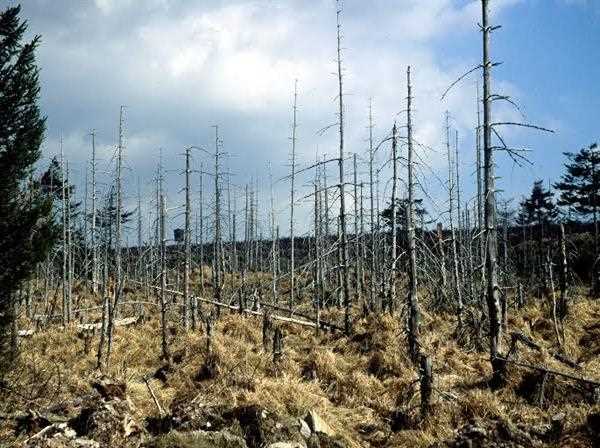Acid rain is a term used to describe precipitation that has a higher acidity than normal rainwater. This acidity is caused by the presence of certain pollutants in the atmosphere, which can react with water vapor to form acids. The primary acid found in acid rain is sulfuric acid, which is formed when sulfur dioxide (SO2) and nitrogen oxide (NOx) emissions combine with moisture in the air.

Sulfur dioxide is primarily produced by the burning of fossil fuels, such as coal and oil, in power plants and other industrial facilities. When released into the atmosphere, sulfur dioxide can react with water vapor to form sulfuric acid (H2SO4), which can then be transported by wind and precipitation to areas far from its original source. Nitrogen oxides, on the other hand, are primarily produced by vehicle emissions and other sources of combustion. When nitrogen oxides combine with moisture in the air, they can form nitric acid (HNO3), which can also contribute to acid rain.
The acidity of acid rain is measured on the pH scale, which ranges from 0 to 14. A neutral pH level is 7, whereas a pH below 7 is regarded as acidic, and a pH above 7 is classified as basic. Normal rainwater typically has a pH of around 5.6, while acid rain can have a pH as low as 4.0 or even lower. This increased acidity can have harmful effects on the environment, including damage to plants, aquatic life, and infrastructure.
Acid rain can also contribute to other environmental problems, such as the formation of smog and the depletion of ozone in the atmosphere. In addition, acid rain can contribute to the acidification of soils and bodies of water, which can have long-lasting effects on ecosystems and human health.
Numerous countries have adopted policies and regulations to mitigate the issue of acid rain by reducing emissions of nitrogen oxides and sulfur dioxide. These measures include the use of clean technologies, such as renewable energy and energy efficiency, and the implementation of emissions standards and cap-and-trade programs. In addition, individuals can take steps to reduce their own contribution to acid rain by conserving energy, using public transportation or carpooling, and supporting policies and initiatives aimed at reducing air pollution.